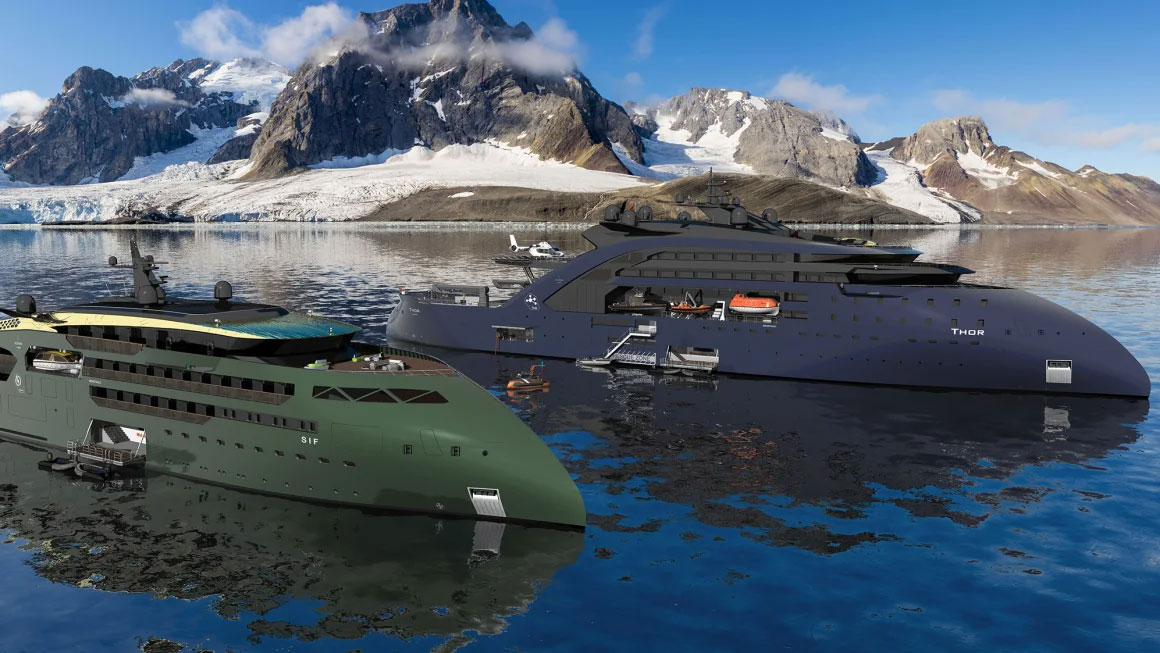|
With the cruise industry aiming to hit carbon neutrality by 2050, could nuclear power be the unlikely answer to the problem?

Tom Anstey | Planet Attractions | 19 Apr 2024

 The Thor concept is a nuclear-powered ship which also generates energy for an electric companion vessel Credit: Ulstein Design & Solutions AS The Thor concept is a nuclear-powered ship which also generates energy for an electric companion vessel Credit: Ulstein Design & Solutions AS
As the cruise industry looks for new ways to reduce its carbon footprint, an unlikely solution has entered the conversation - nuclear power.
At this year’s Seatrade Cruise Global conference, which had the theme ‘Evolution of Cruise’, leaders in the sector explored the idea of nuclear power being used to propel the cruise industry.
Not as outlandish an idea as it might initially sound, nuclear-powered ships have been in use for many decades, though this has been limited mainly to naval vessels owing to cost and public perception of nuclear energy.
With cruise lines aiming to hit carbon neutrality by 2050, green alternatives such as liquified natural gas (LNG) and solar power have been utilised, though a solution to the problem is still being sought.
“Fifteen years ago, we said we’d never see LNG and now we have it,” said Andrew McKeran, chief commercial officer at Lloyd’s Register, speaking during the panel, comparing nuclear energy to the new trend of LNG to reduce emissions.
A more environmentally-conscious fuel option, LNG is one of the cleanest burning marine fuels and can help to reduce a cruise ship’s carbon emissions by up to 30%. Last year, the MSC Euribia conducted the world’s first net zero greenhouse gas emission cruise, with the “fuel-flexible” ship able to be supported by several fuel types including LNG. Despite the success, the company admitted that net zero emission sailings would be “difficult to achieve every day” due to several challenges, including cost and availability of bio-LNG. Additionally, as it stands, ships are only able to operate in a low-emission mode for a maximum of a four-day period.
Solar and wind energy have also been touted as a possible solution to the problem. In 2023, ship builder the Meyer Group showcased what it called a “future vision for the year 2100”, with a vessel that relies on future innovation alongside solar and fuel cells, as well as wind energy. Hydrogen-powered fuel cells are also in the mix, however, the technology is still in its infancy.
The emissions reductions in nuclear power are significant, with only steam generated as a turbine spins to create electricity, removing harmful by-products emitted into the atmosphere by traditional fuels.
The elephant in the room of course is nuclear waste, which while harmful is extremely dense compared to energies such as LNG, oil and coal.
As an example, while nuclear waste will take tens of thousands of years to break down, all of the nuclear fuel produced by the US energy industry over the last 60 years could fit on a football field at a depth of 9m (29ft) - a fraction of the size compared to traditional materials.
When looking at vessels carrying passengers, in the 1950s, the concept was tested with the NS Savannah - a nuclear-powered cargo and passenger ship. At the time, that vessel proved too challenging and expensive to run and the ship stopped taking passengers after just a few years. In 1971, it was fully decommissioned for economic reasons. The ship also faced challenges including safety concerns and the requirement for special permits to dock in foreign ports. Today, locations such as New Zealand have a total ban on nuclear-powered ships in place, challenges which would need to be addressed should the industry ever make the move.
More recently, in 2022 Norwegian shipbuilder Ulstein showcased concepts for Thor - a 500-foot-long cruise vessel named after the Norse god of Thunder but also the element thorium, which would power an on-board nuclear reactor. According to Ulsetin, such a ship would never need to refuel and could create its own supply of electricity, which in turn would be used to power an electric-powered companion vessel. Thor and its companion Sif, says the company, could be operational in 10-15 years.
“I would say it’s not a reasonable power source for the cruise industry in the near- to mid-term - it’s reasonable for other shipping much sooner than cruise,” said William Burke, chief maritime officer for Carnival Corporation, highlighting a string of well-publicised nuclear accidents over many decades.
“We understand that public perceptions of nuclear fear are mixed,” he said, also highlighting “misplaced fears around nuclear”. He added that future generations might take better to the energy source as travellers become more environmentally conscious and standards over nuclear safety improve even further.
So with many safety, regulatory and business model hurdles to overcome, while nuclear power might not be the answer today, in the future it could become a viable one, both from a green standpoint and from a public perspective.
“Where I see nuclear potentially fitting into the cruise industry is a potential future retrofit,’ said Tobi Menzies, director of business development at maritime energy company Core Power.
“Cruise ships have relatively long lives, and they already undergo periodic refits to update passenger amenities. It could be possible to envision rebuilding the power source to be nuclear during a regular refit.”
Navigating to Net Zero - Nuclear-Powered Cruise Ships!’ took place on April 9 as part of Seatrade Cruise Global, with the session including an overview of the technology; regulatory and legal issues; implications for ship construction; safety and security concerns; capital costs and financing challenges; refuelling and waste disposal; insurance challenges and more. For more on Seatrade events, click here
Cruise
|
|






Supplier Showcase 2025: The biggest attractions projects landing worldwide this year
|